The only mountainous desert park in South Africa, the Richtersveld National Park (proclaimed in 1991) is managed jointly by the local Nama people and South African National Parks. A joint management committee has been formed consisting of four people representing the National Park and five people representing the Richtersveld communities.
The Richtersveld climate is harsh and dry, with extreme temperatures of 53ºC having been recorded in the height of summer. Rainfall varies from 50mm-150mm per year and mainly occurs in winter. This unpredictable land depends however, on moisture from the early morning fogs – what the local people call ‘Ihuries’ or ‘Malmokkies’. This water source, which rolls in thickly from the Atlantic Ocean, sustains a remarkable variety of small reptiles, birds and mammals such as Hartmann’s mountain zebra, leopard, hyena, klipspringer and suricate. The park also has a large concentration of succulents, including the famous ‘halfmens’, and trees such as the quiver tree and some tall aloe species.
There are many routes to the park. The most common is via the tarred road, the R382, through Port Nolloth and north up the coast. A highly recommended route for 4×4’s only is that over the mountain pass via Helskloof Nature Reserve between Eksteenfontein and Vioolsdrif. Other routes are through the towns of Lekkersing, Eksteenfontein and Kuboes.
Entrance and overnight permits must be obtained at the park reception before entering the park. Visitors should arrive before 16:00 to ensure they arrive at their campsites before dark.
Visitors to the park are welcome to leave their vehicle at any time and explore the surroundings on foot. A number of hiking trails are laid out in the park, some of which require a high level of fitness. The hiking trails are only operational from April to September. Accommodation options in the park ranges from guest cottages to Nama huts to camping. The cottages and huts are fully equipped, including bedding and towels, and have self-catering kitchen facilities. The camping facilities do not have electricity or shelter and the terrain is unsuitable for caravans unless they are 4×4.
Campsites:
There are five allocated camping areas in the park – Potjiespram, De Hoop and Richtersberg situated on the Orange River; and Kokerboomkloof and De Koei situated inland. The campsites have no facilities, making this the ultimate outdoor wilderness experience. The camper should supply all water, food, tents and outdoor equipment. Sanitation is a sensitive issue and visitors should be prepared for this problem. Chemical toilets are recommended, or else the burning of all paper waste is essential. Unburnt paper does not disintegrate easily due to the dryness and heat. This creates an enormous environmental problem – please consider other campers in the future.
There are no shops in the park, but basic commodities can be purchased at a small general dealer in Sendelingsdrift on weekdays only. Fuel and soft drinks are available at reception everyday.
Please remember that this is a National Park and certain rules apply to visitors. Please collect a full set of the regulations from the park reception on entering the park. All visitors should dispose of their refuse correctly, should bring their own firewood and should keep their vehicles on the roads. Off-road driving damages the delicate balance of the desert and vehicle tracks are painfully long lasting. Single vehicle drivers are required to sign an agreement to report back to park headquarters on departure, as driving in convoy is recommended due to the nature of the roads. 4×4’s are recommended for the park. However, other vehicles with high ground clearance can negotiate some of the roads. No pets are allowed in the park; no collection of rocks, driftwood, crystals or other natural items is permitted; and no generators or outboard motors are permitted as the noise spoils the wilderness atmosphere.
Please note: The Pontoon is currently closed until further notice.
